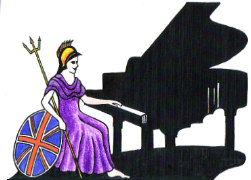Teachers, Accompanists and Piano Entertainers in the UK

UK Piano Page

Unit 3C
Bull Lane Industrial Estate
Sudbury, Suffolk CO10 OBD
England
Madbrook Farm
Warminster Road
Westbury, Wiltshire BA133RB
England
OVER 100 PIANOS IN STOCK ! Sales at our stores in
40 Irongate
Derby, Derbyshire DE1 3GA
England
Charles Foulds opened the first Foulds shop in
Colonial House
Southend-on-Sea, Essex SS0 9ST
England
We specialise in reconditioned and restored
90 Bedhampton Road
Havant, Hampshire PO9 3EZ
England
Bedhampton Pianoshop was established in 1988, and
Music Festival for performers and guests Our 10th
18-06-2022 12:30PM
The Morecambe Bay Piano Group was set up to extend
11-12-2021 01:00PM
The Morecambe Bay Piano Group was set up to extend
08-01-2022 01:00PM
The Morecambe Bay Piano Group was set up to extend
12-02-2022 01:00PM